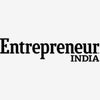Stirring a Storm with Cold Brew Three friends - Ashwajeet Singh, Arman Sood and Ajay Thandi - launched Sleepy Owl Coffee in 2016
Opinions expressed by Entrepreneur contributors are their own.
You're reading Entrepreneur India, an international franchise of Entrepreneur Media.

Ashwajeet Singh went to a law college, but he was always more interested in honing his culinary skills. A food enthusiast and a chef at heart, he loved experimenting with new recipes, and then dish out customized platters for his friends. When he came across the concept of cold-brew-styled coffee, it got him all excited and soon he began trying it out in his kitchen. His cold-brewing impressed his friends, especially his college-mate Arman Sood, who encouraged Singh to take the idea forward.
"When Ashwajeet called and told me about the idea, I was immediately convinced," says Ajay Thandi, Co-founder of Sleepy Owl, who was working with J.P. Morgan at that time. Three friends — Singh, Sood and Thandi — launched Sleepy Owl Coffee in 2016. The startup has come a long way since its inception. Recently, it raised a funding of close to $500,000 from DSG Consumer Partners (DSGCP) — India's leading early stage consumer fund.
The concept of cold brew, despite its growing popularity, is still quite baffling for many. It is a process, where in freshly-roasted beans are soaked in cold water for more than 21 hours, which helps in extraction of acidic properties from the beans. "Hence, the coffee is less bitter and smoother compared to the usual hot brews available in India," explains Thandi. For preparing its concoction, the startup sources Arabica coffee from Chikmagalur farms in Karnataka.
Small batches of roasted beans are then brewed in cold water for a distinct taste and flavor. Currently, Sleepy Owl has four signature offerings: smooth black coffee, Vietnamese, iced coffee with milk and cold brew tonic. Initially, the brand targeted corporate offices, but to create a market they needed a differentiating factor. Thus, they focused on making small, individual, ready-to-use packs of coffee to compete with large, expensive coffee machines.
With Sleepy Owl's "ready-to-drink' sachet packs all one needs to do is pour milk or water, stir and the coffee is ready. The brand launched its first product in a 600 ml pack priced at Rs 300. And, with five brew packs, the same box costs around Rs 500. From each box, which ensures the flavor remain intact, one can make 15 cups. Although Sleepy Owl started with a digital-first approach, they gradually entered the retail market. "Currently, we are present in over 30 modern trade stores, like Foodhall and Le Marche," Thandi informs.










